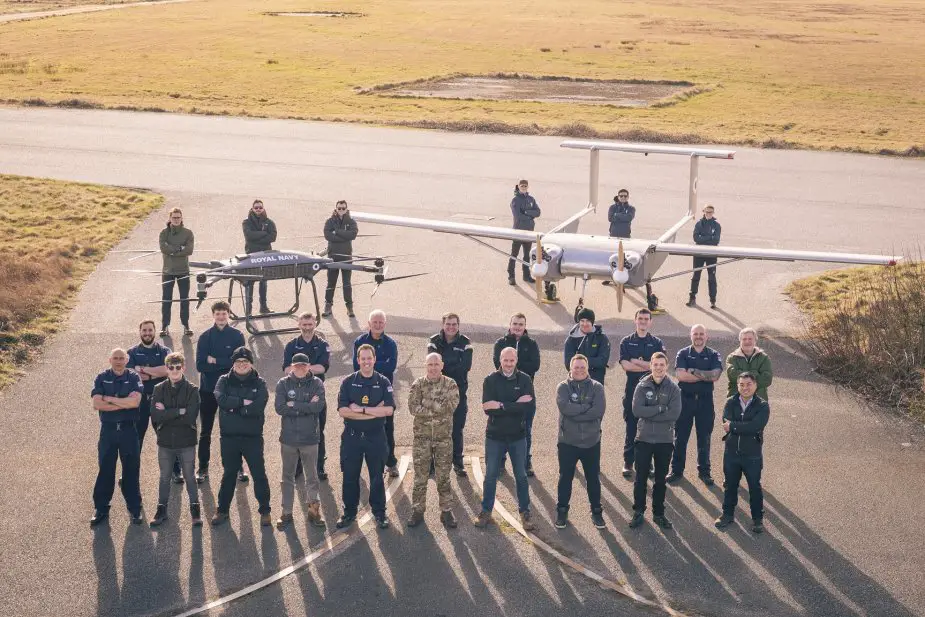Breaking news
UK: Royal Navy tests abilities of two different drones for front-line operations.
According to information published by the UK MoD on April 6, 2022, the navy’s drone experts 700X Naval Air Squadron welcomed industry partners to their home base of RNAS Culdrose to test the two crewless aircraft.
Follow Navy Recognition on Google News at this link
 Malloy Aeronautics T-600 quadcopter and Windracers Autonomous Systems’ Ultra drone at RNAS Culdrose (Picture source: Royal Navy)
Malloy Aeronautics T-600 quadcopter and Windracers Autonomous Systems’ Ultra drone at RNAS Culdrose (Picture source: Royal Navy)
It is the second time the drones have been trialed with initial testing last year the first step of showing how they could be utilized in operations.
Now, a second, more intense series of trials have taken place and both the Malloy Aeronautics T-600 quadcopter and Windracers Autonomous Systems’ Ultra drone proved their abilities to carry heavy payloads of 100kg over long distance and more than 250kg over a shorter distance.
The Heavy Lift Challenge is a collaboration between 700X, the navy’s Office of the Chief Technology Officer, and Defence Equipment and Support’s (DE&S) Future Capability Group.
It aims to encourage industry partners to see what equipment they have which could be adapted for use by the Royal Navy to deliver supplies such as humanitarian stores, first aid, ammunition, and spare parts to the front line. Both Malloy and Windracers were given a £300,000 contract to further develop their drones.
And the aircraft was impressed in the most recent trials which saw the Malloy T-600 fly with a 250kg payload while the fixed-wing Windracers Ultra dropped a 100kg payload 1,000km away to a platform replicating a Queen Elizabeth-class aircraft carrier flight deck. It was able to slow on approach and drop its package with pinpoint accuracy.
The ULTRA (Unmanned Low-cost TRAnsport) platform was developed by Windracers in collaboration with a team at Southampton University, in response to the need for a new type of light cargo drone.
The goal was to develop a robust and cost-effective drone capable of addressing the challenging logistics problems associated with delivering essential airmail and parcels efficiently to people who needed them in a timely fashion.




























